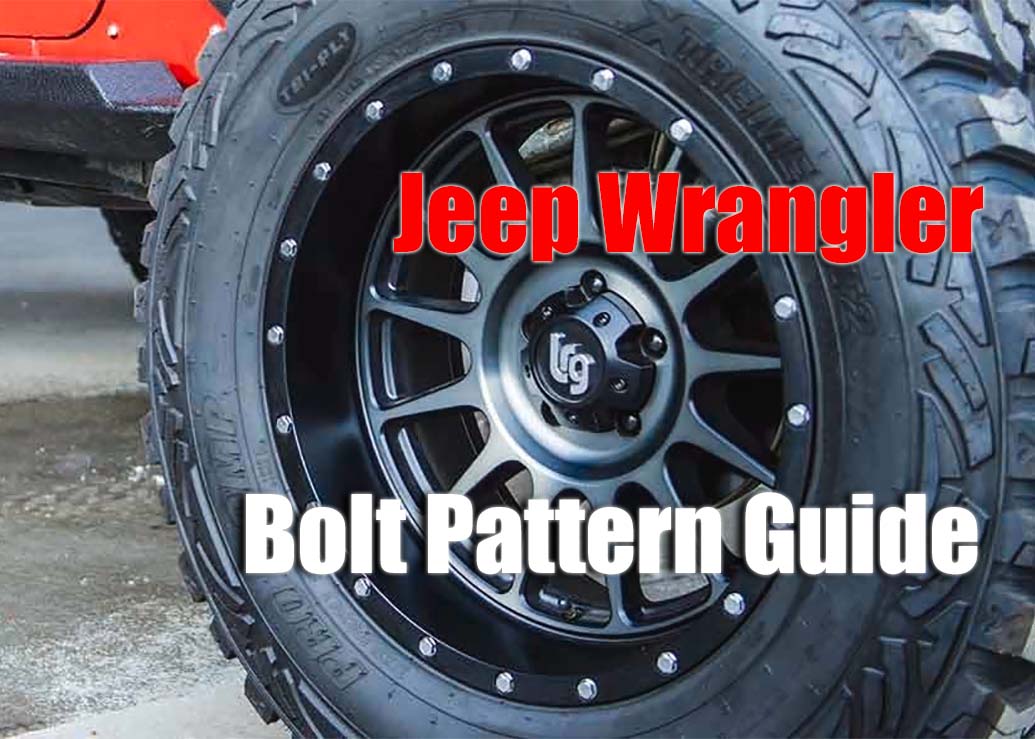Jeep Wrangler Lug Nut Pattern: Everything You Need to Know
So, you're thinking about your Jeep's wheels, huh? Not just any wheels, but the very things that hold those bad boys on – the lug nuts. Specifically, the Jeep Wrangler lug nut pattern. It’s more important than you might think. Seriously, this isn't just about aesthetics; it's about safety and performance. Ignore it, and you might find yourself stranded on the trail. Intrigued? You should be.
Let's talk about the Jeep Wrangler's bolt pattern, often referred to as the lug nut pattern or PCD (pitch circle diameter). This crucial measurement dictates which wheels you can safely mount on your Wrangler. Getting this wrong can lead to wobbly wheels, damaged studs, and even a wheel coming off while driving – yikes! It’s a detail that separates the seasoned Jeepers from the weekend warriors.
Historically, Jeep Wranglers have predominantly featured a 5x5 bolt pattern (also expressed as 5x127mm). This means there are five lug nuts arranged on a circle with a diameter of 5 inches or 127 millimeters. Knowing this seemingly small detail is paramount when selecting aftermarket wheels or swapping tires. Imagine spending your hard-earned cash on a set of fancy new rims, only to discover they won't fit! Talk about a face-palm moment. So, double-check that bolt pattern, folks.
Why is the Jeep Wrangler lug nut pattern so crucial? Well, aside from the obvious safety implications, the correct bolt pattern ensures proper weight distribution and handling. A mismatched pattern can put undue stress on the wheel studs, leading to premature failure. And nobody wants a snapped stud while tackling the Rubicon Trail. Think of it like the foundation of your house – get it wrong, and everything else crumbles.
The lug nut pattern isn't just some arbitrary number. It's a carefully engineered specification designed to handle the stresses and strains of off-roading. The 5x5 pattern, common to Wranglers, provides a robust and reliable connection between the wheel and the axle. This is particularly important when traversing rough terrain, where impacts and vibrations are commonplace. It's the unsung hero of your off-road adventures.
Ensuring you have the correct lug nuts is just as vital as the pattern itself. Using the wrong type or size of lug nut can damage your wheels and studs. Always consult your Wrangler's owner's manual for the correct specifications. Using the wrong seat type (conical, ball, or flat) can cause the wheel to not sit flush against the hub.
One common issue is over-torquing lug nuts, which can strip the threads or even break the studs. Conversely, under-torquing can lead to loose wheels. A torque wrench is your best friend here. Aim for the manufacturer's recommended torque specification, usually found in the owner’s manual.
Advantages and Disadvantages of a Common Lug Nut Pattern
| Advantages | Disadvantages |
|---|---|
| Wider selection of aftermarket wheels | Increased competition for popular wheel designs |
| Easier to find replacement lug nuts | May not be optimal for extreme modifications |
FAQ:
What is the lug nut pattern on a Jeep Wrangler? Typically, 5x5 (5x127mm).
Why is the lug nut pattern important? It ensures proper wheel fitment and safety.
Can I change my Jeep's lug nut pattern? Not easily, and it's generally not recommended.
What happens if I use the wrong lug nut pattern? It can damage your wheels, studs, and even cause a wheel to come off.
Where can I find the correct lug nut torque specification? In your Jeep Wrangler owner's manual.
What are the different types of lug nuts? Conical, ball seat, and flat.
Do I need a torque wrench? Highly recommended for proper lug nut tightening.
Can I use aftermarket lug nuts? Yes, but ensure they are the correct specifications for your Jeep.
Tips and tricks: Regularly inspect your lug nuts for wear and tear. After installing new wheels or rotating tires, re-torque your lug nuts after driving a short distance. Invest in a good quality torque wrench.
In conclusion, understanding the Jeep Wrangler lug nut pattern isn't just about being a car enthusiast; it's about safety and responsible vehicle ownership. Knowing this crucial piece of information will help you make informed decisions about wheel selection, maintenance, and ensure a smooth and safe off-road experience. Remember, the correct lug nut pattern and proper torque are essential for maintaining the integrity of your wheels and ensuring they stay securely attached to your Jeep. Don't take chances with your safety; double-check your bolt pattern and torque specifications before hitting the trail. Stay safe, and happy Jeeping! Knowing this seemingly small detail can make a world of difference in your off-roading adventures. Be informed, be prepared, and keep those wheels rolling safely. Ignoring this critical detail could lead to dangerous consequences on the trail, jeopardizing both your safety and your Jeep's well-being. So, do your research, check your specs, and enjoy the ride!
87 vs 89 octane gas unleashing your engines potential
Transform your space with benjamin moore pale blue hues
The sweet joy of birthday cake illustrations














